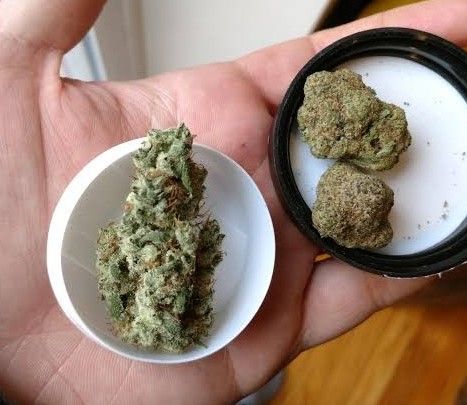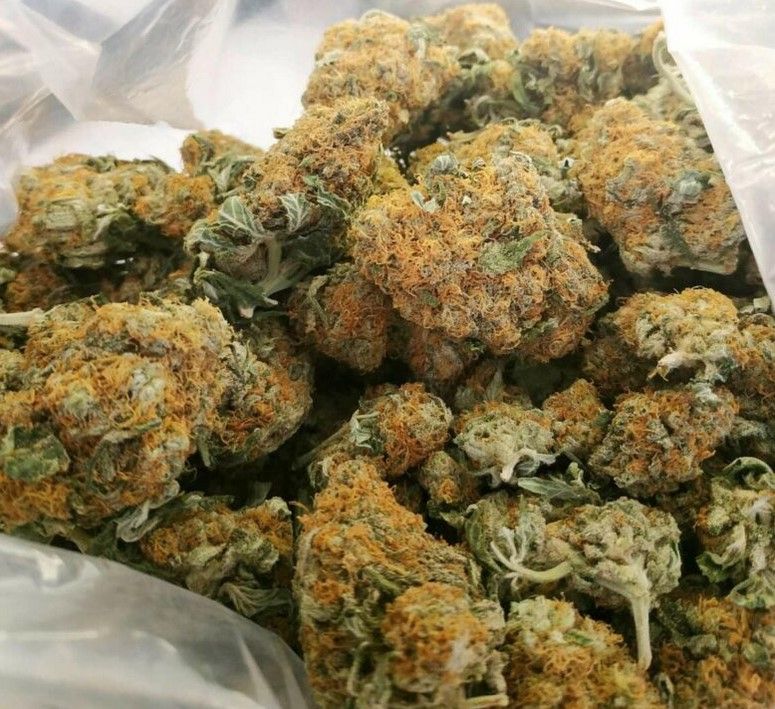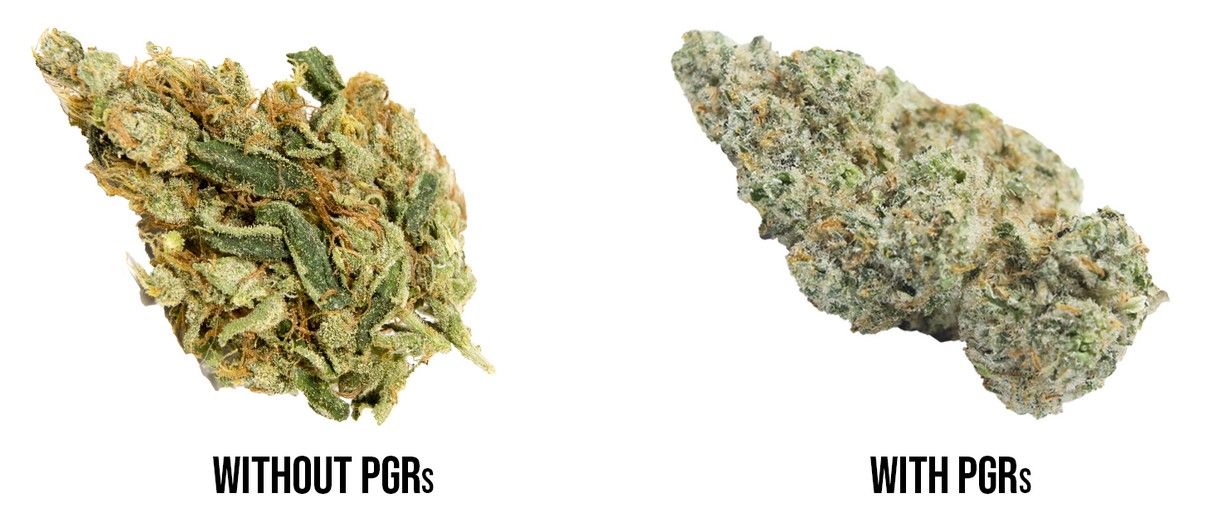PGR, or Plant Growth Regulators, are increasingly being used by marijuana growers in many states to improve their yields. If you’re an experienced smoker, you can tell the difference between PGR and non-PGR weed. This topic is frequently discussed in different forums online.
If you have ever seen marijuana covered in brown hairs that make it appear ugly, then you may have smoked PGR weed. These type of cannabis buds usually smells familiar to the users, or emits a smell that is quite different from other kinds.
What is PGR weed? How can you tell it apart from other strains of marijuana? Are there any negative side effects to smoking PGR weed? If you want to learn more about this topic, keep reading.
What is PGR Weed?
PGR Weed is a type of marijuana plant that has been genetically modified to grow faster and stronger using artificial growth hormones. These chemicals are used by growers to induce faster growth, control roots, trigger flowering, and alter any other growth characteristics. PGR weed refers to cannabis plants cultivated with these chemicals.
PGRs (plant growth regulators) have many benefits for practical plant uses, but they shouldn’t be consumed. The results are astounding when applied to any plant, however the consequences are harsh if ingested. There is no danger when using PGRs for growing hedges and grass in your lawn though.
Although plant growth regulators (PGRs) cause weeds to grow faster and produce haut yields, they are detrimental to the consumer. Adverse health effects will be explored later. For cannabis specifically, the most common PGRs hormones are as follows:
- Paclobutrazol – makes the cannabis plant grow faster and form larger buds.
- Daminozide (Alar) – increases the overall bud yield
- ChlormequatChloride – accelerate growth and flowering
The PGRs listed above are the most commonly used. However, if you as a grower don’t want to use PGRs, here is a list of nutrients for cannabis that will help you achieve non-PGR marijuana:
- Rock Juice

- Boonta Bud
- Rox
- Mega Bud
- Bushload
- Gravity
- Phosphoload
- Superbud
- Dr. Nodes
- Yield Masta/Sudden Impact
PGR Weed Side Effects
Plant growth regulators put a smile on the farmers’ faces but send consumers to their graves early. While researchers meant no harm by discovering these artificial plant hormones, unscrupulous farmers have been abusing them for their own selfish gain.
PGR weed is poisonous and detrimental to your health. If you are able, you should avoid it completely. However, if you cannot abstain, we will also tell you how to identify PGR cannabis. CorsiaNatural is the best way to go as they provide high quality organic marijuana that has not been exposed to any pesticides or herbicides—essentially poison.. They care more about the wellbeing of their consumers than what they stand gain profit-wise; naturally grown marijuana provides just as high of yields without harming those who smoking it.
PGRs can cause two types of side effects in humans: short-term and long-term. Your body’s reaction to being exposed to these growth chemicals depends on how long you were exposed for.
Short-term Effects (accidental exposure)
There are a few ways you can come into contact with plant growth regulators (PGRs). You may be exposed to them if you consume weed grown with PGRs, or if you have short-term exposure to the chemicals.Either way, your body will respond immediately in the following ways:
- Skin and/or eye irritations
- Respiratory distress
- La nausée
- Vomiting, etc.
Some people show no symptoms when exposed to PGRs, while others may experience one or more of the following effects, depending on their immunity and genetic makeup.
Long-term Effects
consuming PGR cannabis over an extended period can have adverse consequences, including death. Some symptoms that may manifest are:
- Lung damage
- Damage to reproductive health in both men and women
- Low amino acid levels in the brain
- Low antioxidant in the brain
- Prenatal health complications
What are the most common PGRs?
Not only are synthetic plant growth regulators dangerous for human consumption, but they also lower the quality of the cannabis grown. The most common PGRs used in cultivation are:
- Paclobutrazol
- Daminozide (Alar)
- Chlormequat Chloride
Paclobutrazol prevents plant cells from elongating, which results in tighter and denser packing of flowers. Additionally, it inhibits the development of key terpenes and reduces THC production.
Smoking paclobutrazol-containing buds breaks down into nitrosamines, which are some of the most carcinogenic compounds found in cigarettes. Studies suggest that paclobutrazol may negatively impact fertility and cause liver damage.
Daminozide, more commonly referred toas Alar, is employed by growers in order to achieve maximum bud yields via the means of slowing growth in leaves and stems. However, like Paclobutrazol, it also decreases terpene production- alongside cannabinoids such as CDB, CBN and THC. To sum up: it largely restricts resin development within the plant overall, resulting in fewer trichomes.
The EPA lists Daminozide as a probable human carcinogen, and it was banned in the U.S for use in consumable plants in 1999 after researchers showed that it could be classified as a carcinogen in high doses. It’s been banned from human consumption since 1989 and has led to several agricultural recalls. Many synthetic PGRs have also been similarly banned as further tests have been done, meaning that researchers will not approve them for food products either. Consequently, you should NOT smoke or ingest any of these synthetic PGRs.
Chlormequat Chloride has the effet of slowing plant growth in specific areas, which then creates more conditions that are favorable for flowering. Adding it to a plant will also work to make its size shorter and more uniform. Although there is no definitive proof that this PGR causes cancer, testing is still underway. There have been some reports from people saying they experienced organ damage, skin irritation, and eye irritation after consuming large quantities of it.
How can you spot PGR cannabis?
Cannabis that has been treated with Plant Growth Regulators (PGR) is often more dangerous to people’s health than natural cannabis, both in the long and short term. There are a few ways you can tell if the cannabis you’re about to consume is PGR-treated:
- Rock-hard dense and heavy bud (flower, herb, etc.)
- Brown or red hairs (pistils) on cannabis is natural, but with PGR cannabis there are often excessive amounts that contrast significantly from trichomes.
- Spongey/wet feeling
- Lack of crystals found on the leaf
- Low THC content
- Harsh chemical taste
- When broken, it emits little to no smell
- A chemical high that progresses quickly and may result in low energy and motivation, as well as headaches.
The Alcohol Drug Helpline is always available to talk if you’re concerned about your drinking or drug taking. You can call 0800 787 797 or text 8681 to speak with a trained counsellor who will provide helpful information and support. All calls are free, confidential, and 24/7. Alternatively, you can chat with the team online through the website.

How to Spot PGR Weed
Consumers of marijuana need to be careful of PGR (Progressively Grown Resin) weeds and stay away from them. The only way to reduce the amount of PGR in weed is if smokers themselves are educated on the topic. The business has been booming because up until now, many people do not know how to tell the difference between PGR cannabis and regular weed.
If growers cannot find a market for paclobutrazol weed or any other marijuana grown with plant hormones, then they will eventually stop producing it. Our goal is to educate consumers so that they can avoid buying PGR weed. However, it can be difficult to tell if the flower you are purchasing was grown with chemicals without knowing what to look for.
PGR vs non-PGR weed
PGR weeds, or “progressively grown” marijuana plants, have clearly distinguishable features when compared to natural weed strains. Most buds boast different 13-15% cannabinoid contents. The following are some common characteristics of PGR in marijuana:
- PGR buds have little to no scent
- Buds feel spongey
- Unusually dense buds with unusual hardness
- Fewer trichomes/crystals
- The weight to size ratio of the buds is high
- Buds have rounded and smooth edges comparable to individual nuggets
- Orange PGR buds: dense orange hairs on the weed, sometimes red hairs
- Excessively dense weed
- THC content much lower than the cannabis strain average
- Harsh chemical taste
- Hits much faster and stronger – often associated with headache
- PGR buds turn dull brown when dried and cured
PGR cannabis is easy to spot if you know what natural marijuana flowers look like. Do not smoke anything that you suspect to be PGR, and tell your stoner friends about it so they can avoid it as well.
FAQs
What does PGR stand for?
Plant Growth Regulators (PGRs) are growth hormones that can be used to change how plants grow. PGRs cause weeds to encourage flowering, bud formation, and faster germination, among other things.
What are PGR buds?
A PGR bud is a type of cannabis that have been grown with plant growth regulators. These are used to increase the rate of photosynthesis, flowering, and fruiting by growers to improve yield quantity.
How do you spot PGR Bud?
PGR buds are less fluffy, more resilient, and have fewer or no crystals/trichomes. They commonly display copious orange hairs or red hairs. Their scent is also not as potent as naturally occurring marijuana.
Why do cannabis growers use PGRS in weed cultivation?
For prolific growth, many farmers use plant growth regulators; however, these chemicals are highly regulated in the agricultural industry to ensure public safety. The cannabis industry has much more relaxed restrictions on PGRs usage, which some less-than-ethical growers take advantage of to increase profits.

